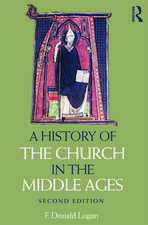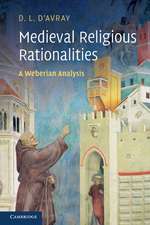The Flight and Fall of the Eagle: A History of Medieval Germany 800 1648
Autor John R. Sommerfeldten Limba Engleză Paperback – 27 oct 2016
The intellectual, cultural, and political renaissance that characterized the Europe of Charlemagne was threatened severely by invasions from all sides. Only Germany avoided the consequent phenomenon of feudalism. This was due to a series of rulers who provided protection to the people, reform to the Church, and patronage of cultural revival. From the thirteenth century, this cultural and political unity began to fragment, and by 1648 what had been a successful revival of the Roman Empire had been destroyed. In addition to tracing the political, cultural and religious history of medieval Germany, this volume examines the thought of outstanding German men and women, and includes an extensive account of the changing status of German Jews.
Preț: 341.38 lei
Nou
65.33€ • 68.12$ • 54.30£
Carte tipărită la comandă
Livrare economică 21 martie-04 aprilie
Specificații
ISBN-10: 0761868380
Pagini: 202
Dimensiuni: 152 x 229 x 21 mm
Greutate: 0.27 kg
Editura: Rowman & Littlefield












